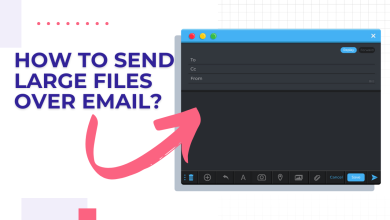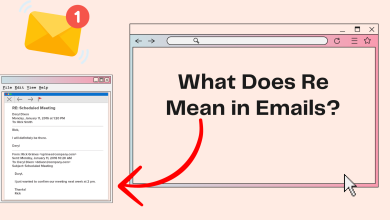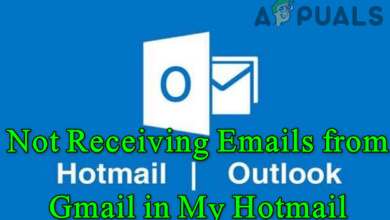How to Save Email as PDF on Gmail, Outlook & Apple Mail
- If you're using Outlook or Gmail, open the email and click on the Print option. Select Save/Print in the Print menu, name your PDF and hit Enter.
- If you're using Outlook or Gmail on mobile, open the email and tap the three-dot icon. Select Print, select Save as PDF in the next menu and tap the PDF icon.
- If you're using Apple Mail on iPhone, open the email and tap the Reply icon. Now tap the Share icon, select Save to Files, pick a name and tap Save.
- If you're using Apple Mail on Mac, open the email and click on File in the menu bar. Select Export to PDF, name your PDF and hit Save.
Emails have become the mainstream method of professional communication. From job offers to notifications, our inboxes often hold crucial information that can be deleted automatically after a while.
To avoid accidentally deleting important emails, converting them into PDFs is advisable in order to keep them secure on your device, making emails accessible both offline and online. In this guide, we will go over how to save your emails as a PDF easily and across platforms and services.
Table of Contents
1. Outlook
The simplest universal method of saving your emails as a PDF is found in Outlook, which is available on almost every platform possible. So, if you use Outlook, the steps are very similar and quite straightforward for each device.
Outlook.com
For users who rely on Outlook’s web client, follow these steps:
- Navigate to Outlook.com in a web browser.
- Select the email message you wish to save and click the “Print” button in the toolbar above.
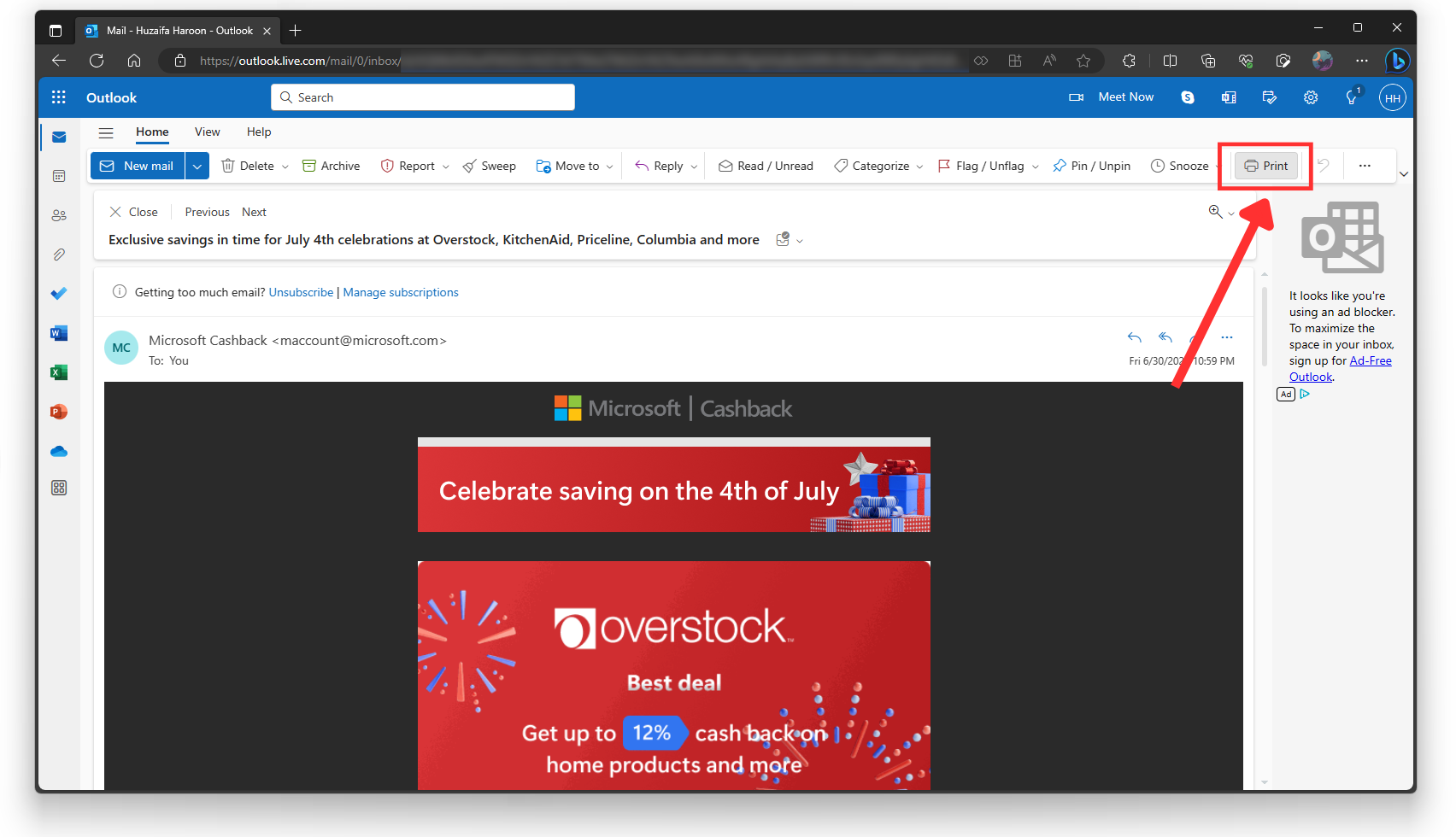
Click the Print button in the toolbar - Click on Print again when the email opens.

Click the Print button - In the printer menu, simply click on Print one last time. Depending on your browser, this menu might look a bit different.

Click the Print button - Choose a name and location for the PDF file and click on Save or just press Enter on your keyboard.
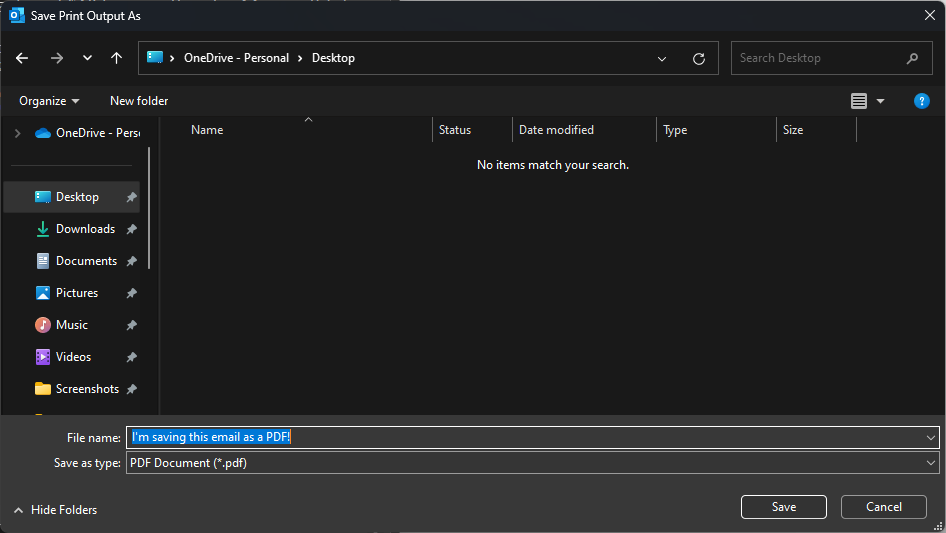
Choose the name and location for the PDF
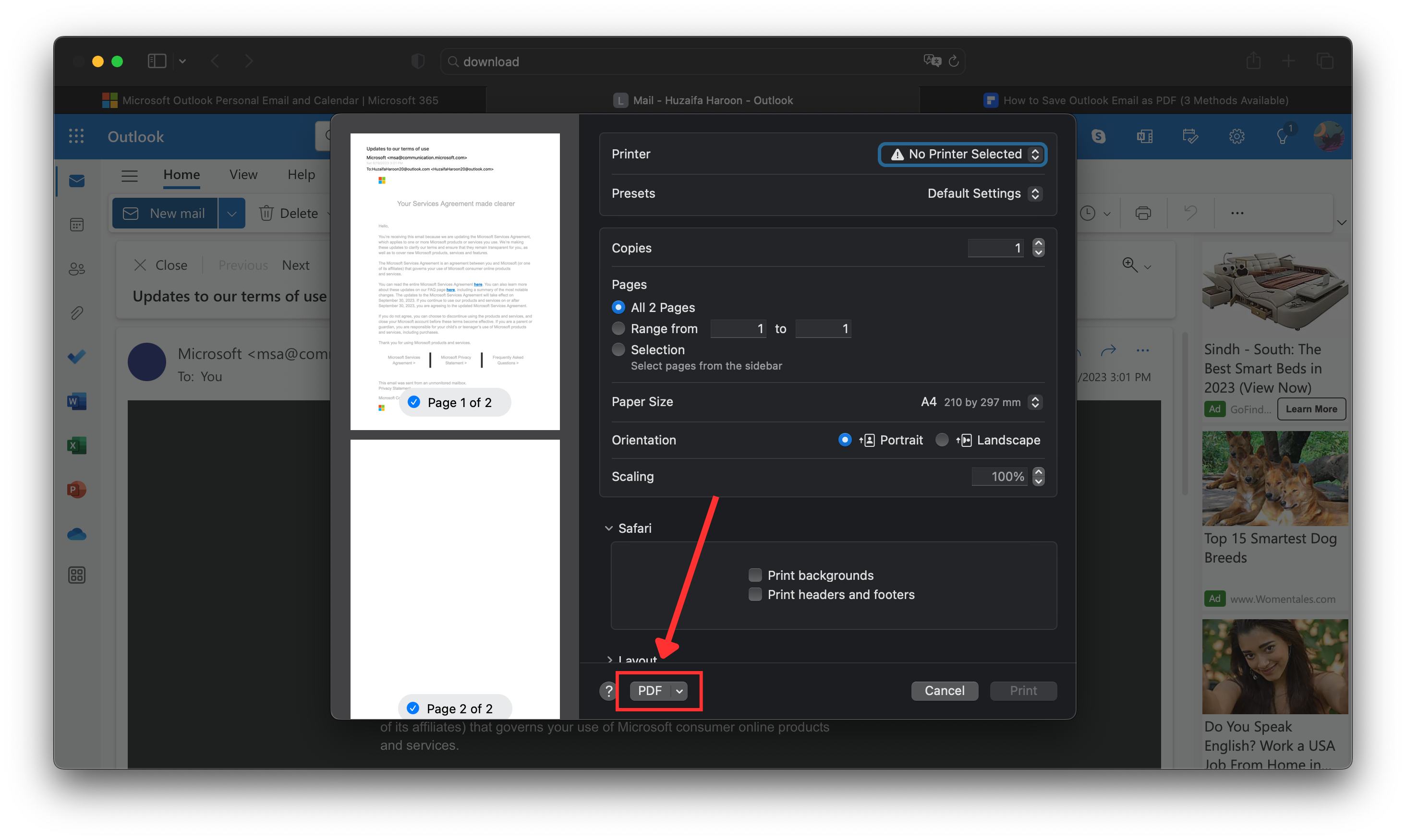
SEE ALSO: How to Make A PDF Smaller ➜
Outlook App on Windows & macOS
There are technically two different versions of Outlook available for desktop users. There’s the standard Outlook app for Windows and then the Preview version, which happens to be the standard Outlook app on Mac. So, if you have the new app, just follow the steps given above for Outlook.com as the app looks and functions the same as the site.
But if you’re using the standard Windows app, then follow these steps:
- Launch Microsoft Outlook.
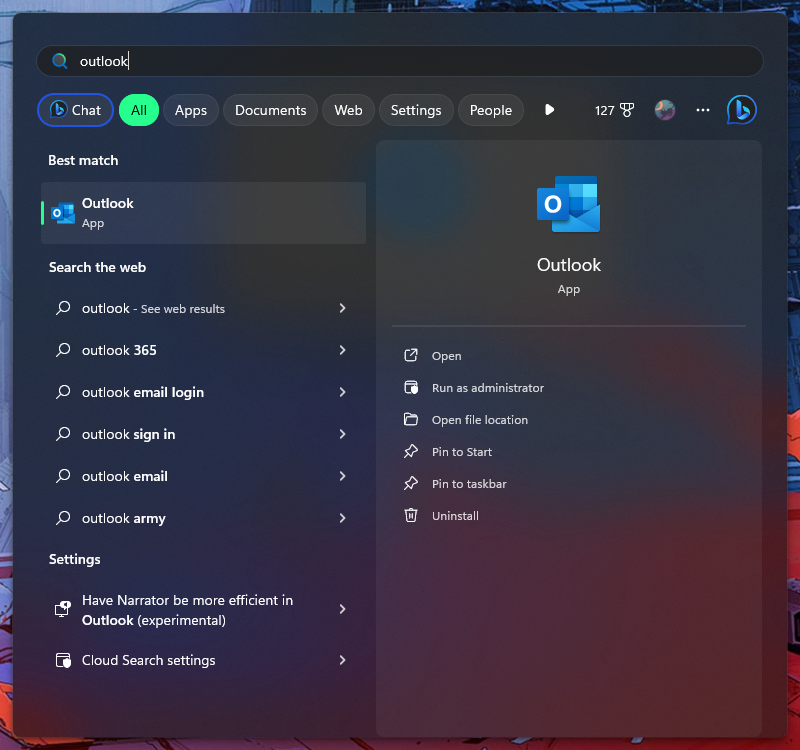
- Simply right-click on your desired email and select Quick Print from the menu (2nd option from the top).
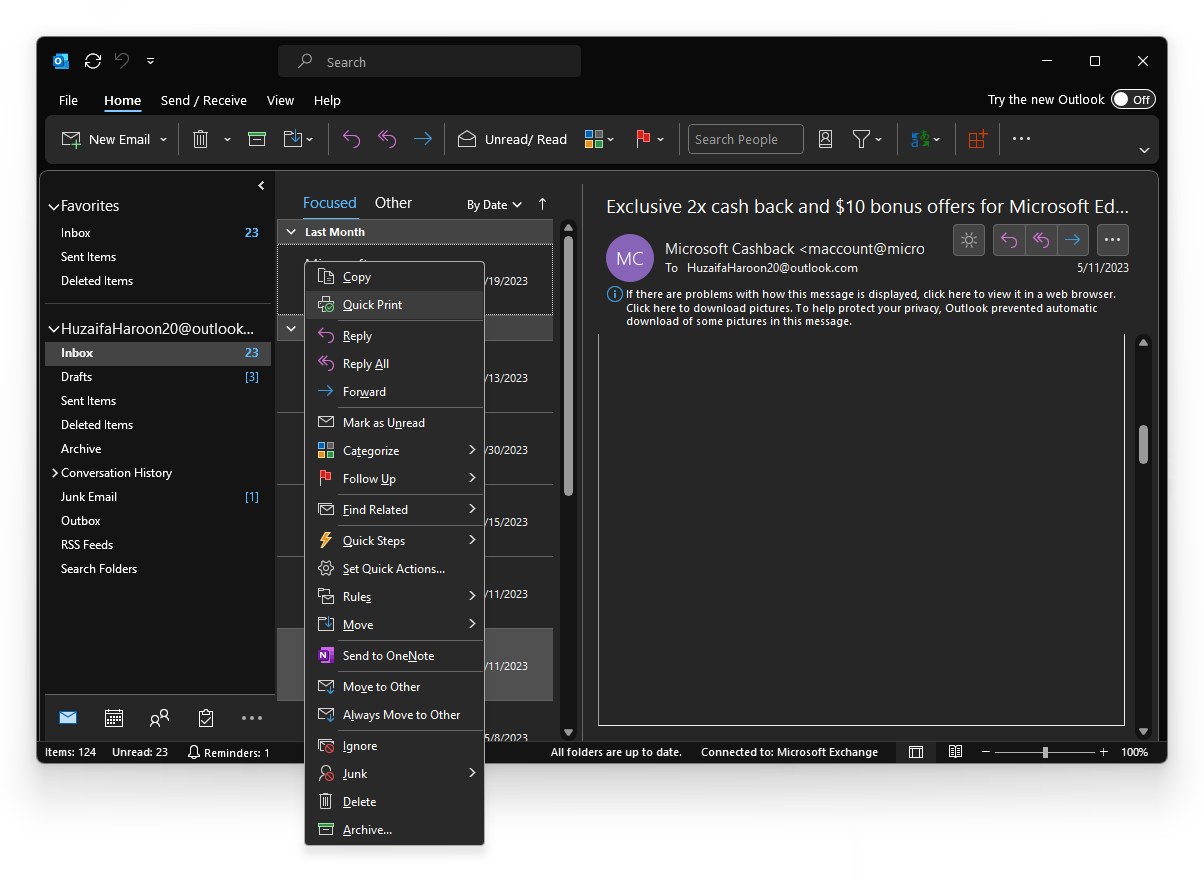
Right-click on the email and select Quick Print - Now, just choose a location and file name and hit Enter. Your email will be automatically saved as a PDF.

Choose the name and location for the PDF
Outlook App on Android & iPhone
If you’re on mobile, the steps for downloading an email as a PDF on the Outlook app are the same across Android and iPhone devices:
- Launch Outlook on your phone and open the email you want to save.
- Press on the three dots in the right corner and tap on “Print“.
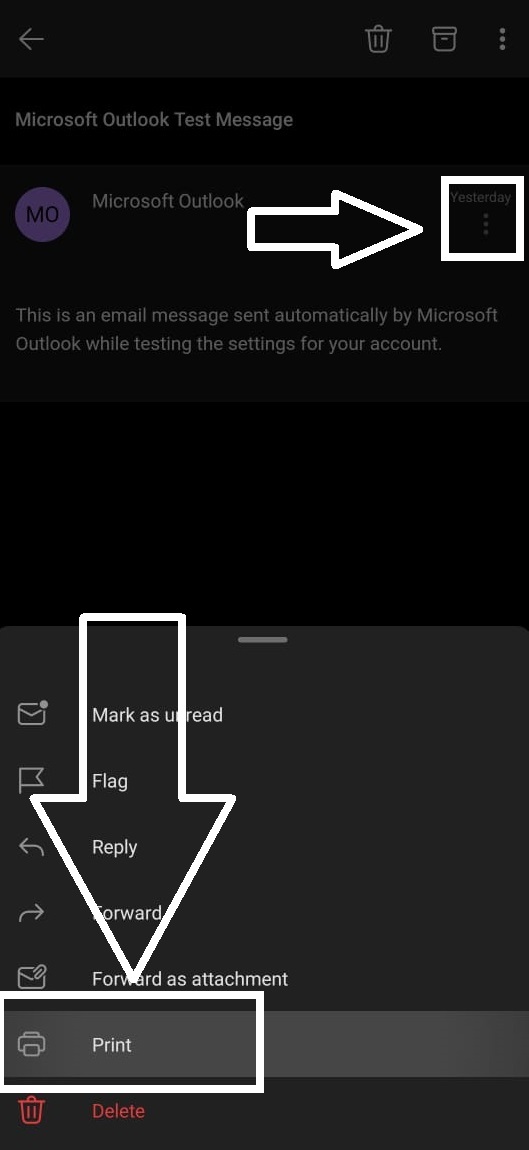
Outlook App – Print Option - In the top-leftcorner, tap and select “Save as PDF” and tap the PDF icon on the right:

Outlook App – Print Menu - You’ll be asked to choose a name and location for your PDF, do that and tap on Save.
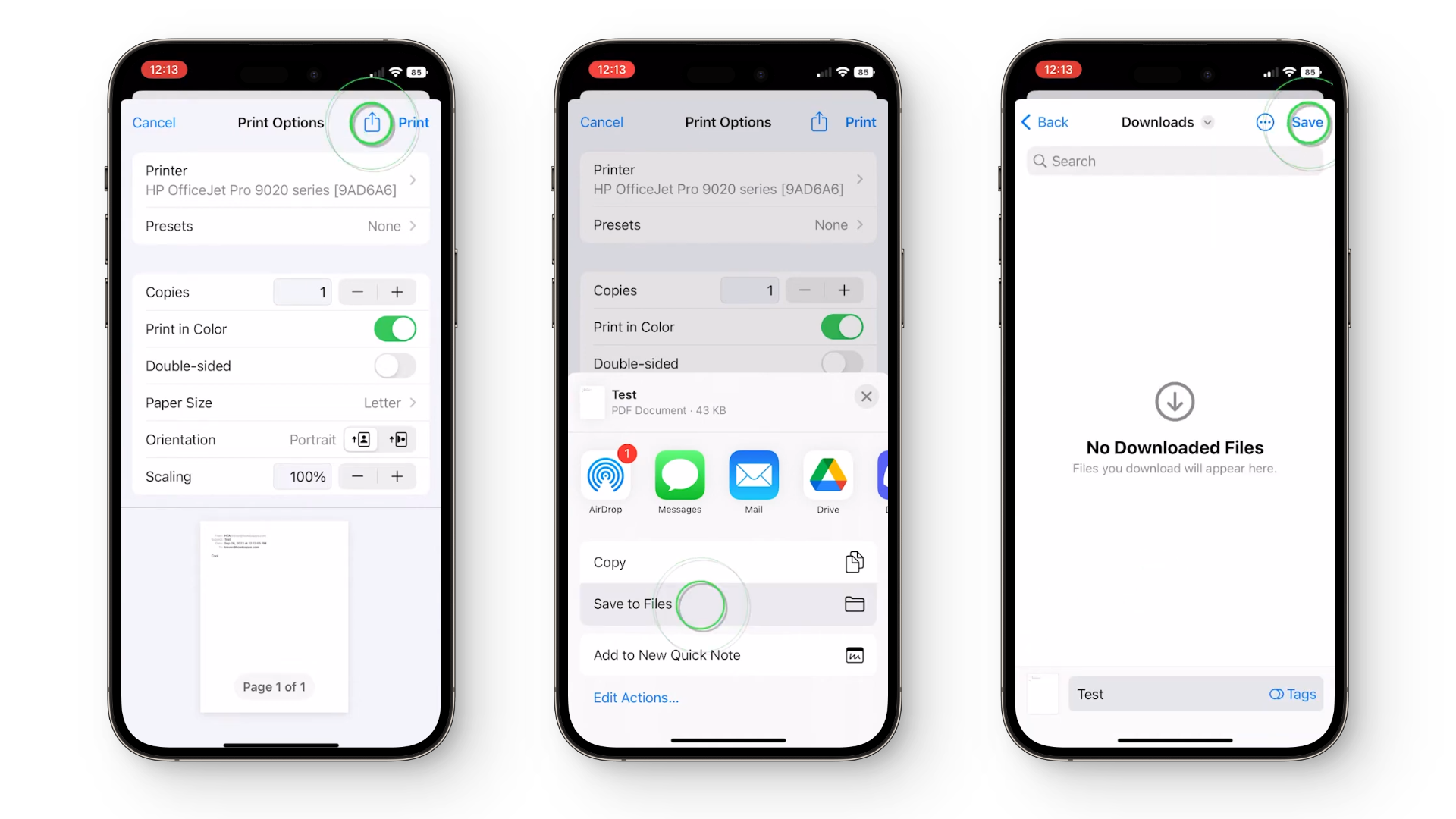
SEE ALSO: How to Type in a PDF on Windows, Mac, Android & iPhone ➜
2. Gmail
If you use Android, then you most likely have a Gmail account. You can easily convert Gmail to PDF on all devices by following the steps below.
Gmail.com
This method works on anything that runs a browser, but more realistically Windows and macOS devices:
- Launch your preferred browser and head over to Gmail. Open the email you want to save as PDF.
- If you want to print the whole email conversation, then press the “Print All” button. Otherwise, click on the three-dot icon of the email you wish to download.

Gmail – Print All - The printer menu will now open in new tab. Click on Print, choose a location and name for your PDF and hit Enter.

There you have it. Your email is saved as a PDF on your computer.
Gmail App on Android & iPhone
- Download and open the Gmail app on your mobile
- View and open the email you want to download as a PDF.
- Press on the three dots in the top right corner.

Gmail On Mobile – Print Options - Tap on the top-left and make sure Save as PDF is selected. Then just tap on the PDF icon on the right.

Gmail on Mobile – Print Menu - You’ll be asked to choose a name and location for your PDF, do that and tap on Save.

SEE ALSO: How to Crop or Resize your PDF Pages Easily ➜
3. Apple Mail
You can save emails as PDFs using Apple’s built-in Mail app on the iPhone, iPad and macOS easily. In the Outlook and Gmail sections above, we have already highlighted how the “Print” function works on iPhone but let’s talk specifically about Apple Mail now:
iPhone
- Launch the “Mail” app on your device. Open the email you wish to save as PDF.
- Now, tap on the Reply icon in the bottom.

Tap the Reply icon - On the reply menu, scroll and tap on “Print.”

Tap on Print - You’ll see a thumbnail preview of the email. Now we repeat the steps mentioned in the Gmail and Outlook sections above – Tap on the Share icon in the top-right, tap on Save to Files, then finally name your PDF and hit Save.

Share icon > Save to Files > Save
macOS & iPad
- Open the “Mail” app on your Mac and select the email you want to download as PDF.
- In the menu bar, click on File and select “Export as PDF” from the options.

Click on File then select Export as PDF - Select a name for your PDF and choose the download location, then click on Save.

Chose name and location and click Save
SEE ALSO: How to Edit a Secured PDF File ➜
Conclusion
You can easily save any email to a PDF regardless of the email client or device you’re on. Some situations might require a bit more work than others but at the end you’ll have the same, great PDF copy. Come to think of it, Google, Apple and Microsoft can further streamline the process by developing some sort of native PDF button for their operating systems and websites. Till then, these are all the steps needed to convert an email into a PDF.
FAQs
PDFs are generally not meant for editing. However, there are PDF editors available that can make minor changes or annotations to the document.
Most modern email platforms and apps offer a way to save or print emails as PDFs. However, the exact method may vary depending on the platform or device.
Yes, depending on the email platform and the device, you can often choose specific pages or sections of an email to save as a PDF, especially when using the print function.
In most cases, hyperlinks within the email remain active and clickable when the email is saved as a PDF.
 Reviewed by
Reviewed by 